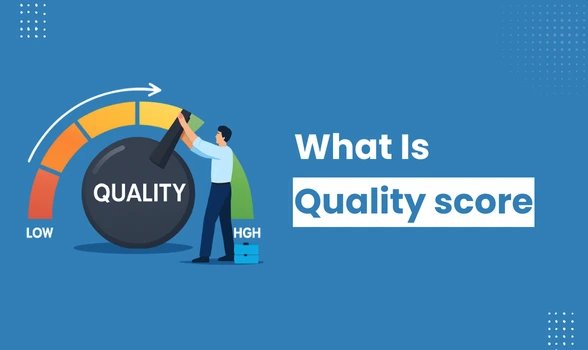Quality Score is a critical metric used by Google Ads to measure the relevance and quality of your ads, keywords, and landing pages. Rated on a scale from 1 to 10, it determines how well your ads perform in relation to competitors bidding on the same keywords.
The score is based on three main factors:
- Expected click-through rate (CTR),
- Ad relevance
- Landing page experience.
Expected CTR estimates the likelihood that users will click your ad when shown. Ad relevance assesses how closely your ad matches the searcher’s intent. Landing page experience evaluates how useful and relevant the landing page is to visitors. These factors collectively influence your ad rank, how often your ads are shown, their position, and the cost per click (CPC) you pay. A higher Quality Score means better ad placement and lower costs, making it essential for efficient and effective advertising campaigns.
Benefits of Improving Google Quality Score
Improving your Quality Score leads to multiple benefits. First, it reduces your CPC, allowing you to get more clicks for the same budget. This means better return on investment and more cost-effective campaigns.
Second, higher Quality Scores improve your ad position on search result pages, increasing visibility and driving more traffic. Well-ranked ads usually get much higher click-through rates, boosting campaign performance.
Additionally, ads with strong Quality Scores provide a better user experience by showing relevant ads matched with keyword intent and directing users to valuable landing pages. This relevance builds trust and encourages conversions.
Finally, maintaining a high Quality Score can provide competitive advantages by allowing you to outbid or outperform competitors who have lower scores but may be spending more.
Types of Quality Score
Several types of Quality Score exist within Google Ads to measure different aspects:
- Keyword-Level Quality Score: The most common type, rating each keyword from 1 to 10, indicating how well it matches ads and landing pages.
- Account-Level Quality Score: Reflects the overall quality across your entire Google Ads account.
- Ad-Level Quality Score: Measures the effectiveness and relevance of individual ads.
- Ad Group Quality Score: Average score of all keywords within an ad group, indicating how well ads and keywords work together.
- Display Network Quality Score: Specific to display ads, assessing relevance between ads, landing pages, and the themes of websites where ads appear.
- Landing Page Quality Score: Focuses solely on the landing page’s relevancy, content quality, and user experience.
- Mobile-Level Quality Score: Calculates scores separately for mobile devices, reflecting mobile user behavior and location data.
Understanding these types helps tailor optimization efforts to different campaign components, improving overall performance.
How Do You Increase Your Google Ads Quality Score?
Improving Quality Score involves focusing on its three core components:
1. Expected Clickthrough Rate (CTR)
Create ads that closely match what users are searching for. Use compelling, clear headlines and calls to action like “Buy Now” or “Get a Quote.” Test multiple ad copies to find the most engaging variants. Higher CTR indicates your ads are relevant and appealing, positively impacting Quality Score.
2. Ad Relevance
Organize keywords into tightly themed ad groups so ads closely align with keyword intent. Write ad copy that directly addresses the searcher’s query and integrates keywords naturally. Avoid generic or broad ads that don’t reflect the keyword focus.
3. Landing Page Experience
Ensure landing pages are fast, mobile-friendly, and directly related to your ads. Provide clear, valuable information that fulfills users’ expectations set by the ad text. Keep navigation simple and highlight calls to action. A good user experience on the landing page retains visitors and improves conversions.
Additional Tips:
- Use negative keywords to avoid irrelevant traffic and wasted clicks.
- Segment campaigns by device, location, and time to optimize for performance variations.
- Utilize ad extensions and formats that provide additional relevant information.
- Continuously review performance data and iterate on ads, keywords, and landing pages.
By systematically addressing these areas, advertisers can boost Quality Scores, lower costs, improve rankings, and drive better results for their Google Ads campaigns.




